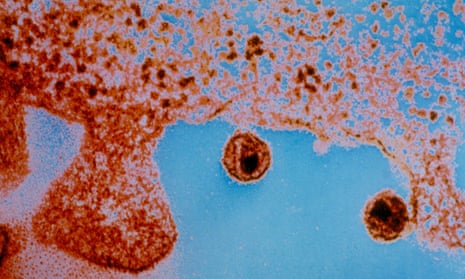Scientists appear to have cured a third person, and the first woman, of HIV using a novel stem cell transplant method, American researchers in Denver, Colorado, said on Tuesday.
The patient, a woman of mixed race, was treated using a new method that involved umbilical cord blood, which is more readily available than the adult stem cells which are often used in bone marrow transplants, according to the New York Times.
Umbilical cord stem cells also do not need to be matched as closely to the recipient as bone marrow cells do.
“We estimate that there are approximately 50 patients per year in the US who could benefit from this procedure,” said Dr Koen van Besien, one of the doctors involved in the treatment.
“The ability to use partially matched umbilical cord blood grafts greatly increases the likelihood of finding suitable donors for such patients.”
The group of researchers revealed some of the case details at the Conference on Retroviruses and Opportunistic Infections in Denver. The woman is being called the “New York patient” by scientists, because she received the treatment at the New York-Presbyterian Weill Cornell Medical Center.
In 2013, she was diagnosed with HIV. Four years later, she was diagnosed with leukemia. In a procedure known as a haplo-cord transplant, she was given cord blood from a partially matched donor to treat her cancer. A close relative also provided her with blood to boost her immune system as she underwent the transplant.
After patients receive an umbilical cord blood transplant, they are then given additional adult stem cells. The stem cells grow quickly but are eventually replaced by cord blood cells.
Although cord blood is more adaptable than adult stem cells, it does not yield enough to serve as effective treatments of cancer in adults. As a result, in haplo-cord transplants, the additional transplant of stem cells helps make up for the scarcity of cord blood cells.
“The role of the adult donor cells is to hasten the early engraftment process and render the transplant easier and safer,” said Van Besien.
Since the woman’s transplant in August 2017, she has been in remission from her leukemia for more than four years. Three years after the transplant, she and her doctors discontinued her HIV treatment. Fourteen months since, she has yet to experience any resurgent virus.
According to the scientists, the majority of donors in registries are of Caucasian descent. As a result, allowing for only partial matches can open up the potential to treat patients who have both HIV and cancer, and also those who come from more diverse racial backgrounds.
“The fact that she’s mixed race, and that she’s a woman, that is really important scientifically and really important in terms of the community impact,” Dr Steven Deeks, an Aids expert at the University of California, told the Times.
Even though more than half of the world’s 35m HIV cases are found in women, women only make up 11% of participants in cure trials.
Although Deeks was not involved in the case, he acknowledged that “these are stories of providing inspiration to the field and perhaps the road map.
“Umbilical stem cells are attractive,” he added. “There’s something magical about these cells and something magical perhaps about the cord blood in general that provides an extra benefit.”
